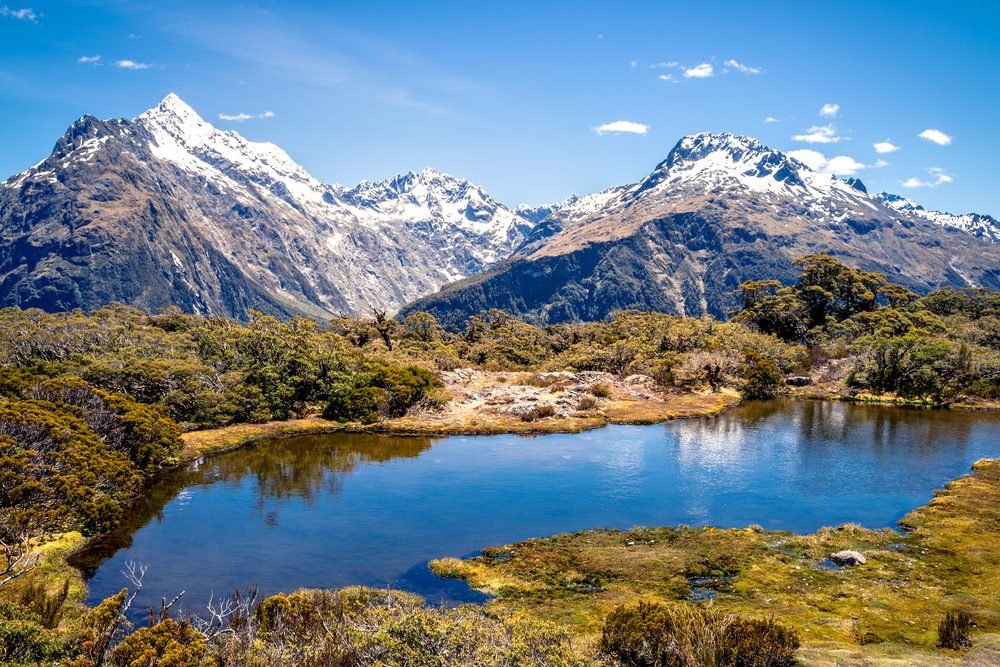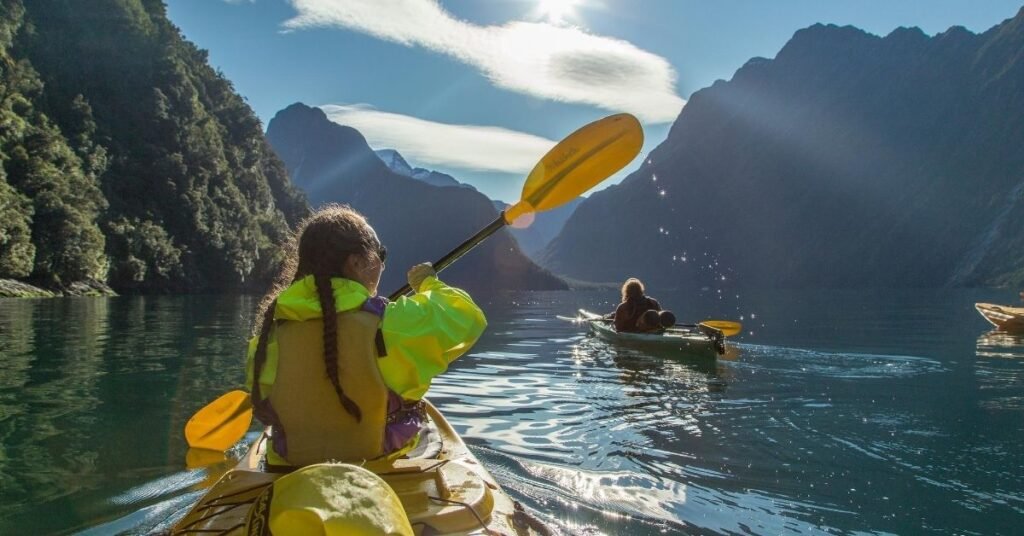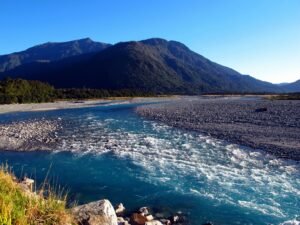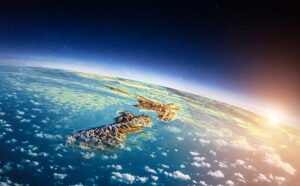
Welcome to Fiordland National Park, a land of unparalleled natural beauty tucked away in the southwestern corner of New Zealand’s South Island. Known for its breathtaking fjords, pristine wilderness, and a myriad of outdoor adventures, Fiordland National Park is a destination that promises an unforgettable experience for nature lovers and adventure enthusiasts alike.

In this comprehensive guide, we will embark on a virtual journey through the wonders of Fiordland National Park. From the iconic Milford Sound to the lesser-known gems hidden within its boundaries, we’ll explore the park’s diverse landscapes, wildlife, and activities. Whether you’re planning a visit or simply wish to immerse yourself in the beauty of this remote wilderness, join us as we delve into the heart of Fiordland National Park.
1. Introducing Fiordland National Park
A Land of Fiords: Fiordland National Park is a testament to the forces of nature, carved by glaciers during the last Ice Age. Its defining feature is its deep, U-shaped fiords that cut into the heart of the Southern Alps, creating dramatic landscapes characterized by towering cliffs, cascading waterfalls, and lush rainforests.
The UNESCO World Heritage Status: Recognized as a UNESCO World Heritage Area, Fiordland National Park is celebrated for its unique geological formations, stunning fjords, and the preservation of its diverse ecosystems. It is a testament to New Zealand’s commitment to preserving its natural heritage.
Unique Ecosystems and Biodiversity: Within the park’s boundaries lies a mosaic of ecosystems, from pristine lakes and wetlands to ancient forests and alpine meadows. Fiordland is home to a remarkable diversity of flora and fauna, including endemic species found nowhere else on Earth. This biodiversity is a testament to the park’s ecological significance.
2. The Iconic Milford Sound
Cruising Milford Sound: Milford Sound is perhaps the most renowned of Fiordland’s fiords. Visitors can embark on cruises that navigate the serene waters of the sound, providing an up-close view of its famous features, including the towering Mitre Peak and the cascading Stirling Falls. Keep an eye out for wildlife, as dolphins, seals, and even the occasional whale may make an appearance.
Milford Track: The “Finest Walk in the World”: The Milford Track, often hailed as the “finest walk in the world,” is a multi-day hiking trail that traverses some of Fiordland’s most stunning landscapes. The journey takes you through pristine forests, past thundering waterfalls, and alongside glacial lakes, culminating at the breathtaking Milford Sound.
Kayaking in Milford Sound: For a more intimate experience of Milford Sound, consider kayaking. Paddle through the calm waters, explore hidden coves, and get up close to the sheer cliffs and waterfalls. It’s a peaceful and immersive way to connect with this natural wonder.

Underwater Observatory: To explore the underwater world of Milford Sound, descend into the underwater observatory. Observe the remarkable marine life, including black coral trees and colorful sponges, through the observatory’s windows. It’s a unique opportunity to witness the underwater ecosystems of the fjord.
3. Doubtful Sound: The Wilderness Gem
Doubtful Sound vs. Milford Sound: While Milford Sound garners much of the attention, Doubtful Sound offers a quieter and more remote experience. Known for its untouched wilderness and serene beauty, Doubtful Sound is often referred to as the “Sound of Silence.” The absence of road access and limited tourism makes it a pristine wilderness destination.
Doubtful Sound Cruise: To experience Doubtful Sound’s tranquility, take a cruise across its waters. The journey often includes guided commentary about the area’s natural history and wildlife. You’ll have the chance to spot seals, dolphins, and rare bird species while surrounded by the sound’s awe-inspiring scenery.
Overnight Adventures: For a more immersive experience, consider an overnight cruise or kayaking trip in Doubtful Sound. Spending the night amidst this untouched wilderness under a starry sky is an unforgettable experience.

4. Exploring Dusky Sound
Remote Wilderness of Dusky Sound: Dusky Sound, one of Fiordland’s hidden gems, offers an unparalleled sense of isolation and pristine beauty. Accessible only by boat or helicopter, it is a remote wilderness that rewards those who venture here with untouched landscapes and the sense of being truly off the grid.
Historic Connections: Dusky Sound has historical significance as well. It was visited by Captain James Cook in the 18th century during his exploration of New Zealand. Cook’s Cove, where he anchored the HMS Resolution, remains a testament to this rich history.
Dusky Track: For those seeking a challenging adventure, the Dusky Track is a multi-day hiking trail that takes you through Dusky Sound’s rugged terrain. This trail offers a glimpse into the heart of Fiordland’s wilderness, complete with dense forests, river crossings, and backcountry huts for overnight stays.
5. The Hidden Treasures of Fiordland
Lake Te Anau: Lake Te Anau, the largest lake in the South Island, serves as the gateway to Fiordland National Park. This pristine lake is perfect for boating, fishing, or simply taking in the views of the surrounding mountains. The town of Te Anau, nestled on its shores, is an ideal base for exploring the park.
Routeburn Track: The Routeburn Track is another of New Zealand’s Great Walks, known for its stunning alpine scenery, glacial valleys, and charming huts. The track offers a diverse range of experiences, from high mountain passes to peaceful beech forests.
Kepler Track: The Kepler Track is a circular hiking trail that showcases Fiordland’s diverse landscapes. Highlights include the serene Lake Te Anau, lush beech forests, and panoramic alpine views. It’s an excellent choice for a day hike or a multi-day adventure.
The Hollyford Track: The Hollyford Track takes you through a remote wilderness area, tracing the Hollyford River from its source in the mountains to the rugged west coast. This track offers an authentic backcountry experience and a deeper connection to Fiordland’s natural beauty.
6. Wildlife Encounters
Iconic Fiordland Species: Fiordland National Park is a haven for wildlife enthusiasts. Look out for iconic native species such as the kea (a mischievous alpine parrot), the elusive takahe (a large flightless bird), and the charming kiwi bird. The park’s isolation has preserved many species found nowhere else in New Zealand.
Bird Watching: Birdwatchers will be in paradise in Fiordland. Bring your binoculars to spot a variety of bird species, including the kea, the weka, and the kakapo (one of the world’s rarest parrots). The park’s pristine forests and waterways provide rich habitats for these avian treasures.
Seals and Dolphins: Seals and dolphins often make appearances in the fiords. Watch for New Zealand fur seals basking on rocks, and keep an eye out for playful bottlenose dolphins swimming alongside boats during cruises.
Fiordland Crested Penguin: Fiordland is also home to the Fiordland crested penguin, one of the world’s rarest penguin species. These distinctive birds can occasionally be spotted on the coastlines and islands of Fiordland.
7. Outdoor Adventures
Hiking and Tramping: Hiking, or tramping as it’s known in New Zealand, is one of the best ways to immerse yourself in Fiordland’s landscapes. From day hikes to multi-day treks, there are trails suited to all levels of experience. Be sure to check weather conditions and have the appropriate gear when embarking on a hike.
Kayaking and Canoeing: Exploring the fjords by kayak or canoe is an intimate way to connect with the pristine waters of Fiordland. Glide along the glassy surface, venture into hidden coves, and marvel at waterfalls cascading directly into the sea.
Scenic Flights: For a bird’s-eye view of Fiordland’s grandeur, take a scenic flight. Helicopter and fixed-wing aircraft tours provide a breathtaking perspective of the fjords, glaciers, and remote landscapes.
Scuba Diving: Experienced divers can explore the underwater world of Fiordland. Beneath the surface lies a unique marine ecosystem with colorful sponges, black coral forests, and diverse fish species. Fiordland’s underwater landscapes are a hidden treasure for diving enthusiasts.
8. Te Anau: The Gateway to Fiordland
Exploring Te Anau: Te Anau is often referred to as the “gateway to Fiordland” and is a charming town in its own right. Explore the town’s shops, cafes, and restaurants, and learn about Fiordland’s natural history at the Fiordland National Park Visitor Centre.

Glowworm Caves: Te Anau is also famous for its glowworm caves. Take a boat trip to the Te Anau Glowworm Caves to witness the mesmerizing spectacle of thousands of glowworms illuminating the cave’s ceiling.
9. Weather and Best Time to Visit
Fiordland Climate: Fiordland National Park experiences a maritime climate with high rainfall throughout the year. Be prepared for changeable weather, including rain, even in the summer months. Snow is possible at higher elevations during winter.
Ideal Seasons for Visiting: The best time to visit Fiordland depends on your preferences. Summer (December to February) offers longer daylight hours and milder temperatures, making it ideal for hiking and outdoor activities. Autumn (March to May) brings colorful foliage, while winter (June to August) offers a peaceful and snowy landscape, perfect for those seeking solitude. Spring (September to November) brings blossoming wildflowers and fewer crowds.
10. Practical Tips for Your Fiordland Adventure
Getting to Fiordland: The nearest major airports to Fiordland are Queenstown and Invercargill. From there, you can drive or take a bus to Te Anau, the gateway to the national park. Rental cars and guided tours are readily available.
Accommodation Options: Accommodation in Fiordland ranges from campgrounds and backcountry huts to lodges and luxury eco-retreats. Booking in advance is advisable, especially during the peak tourist season.
Guided Tours vs. Independent Travel: Consider joining a guided tour to make the most of your Fiordland experience. Expert guides can enhance your understanding of the park’s natural history and wildlife. However, independent travelers will also find plenty of resources and opportunities for self-guided exploration.
Conservation and Safety: Respect the fragile ecosystems of Fiordland by following Leave No Trace principles. Be aware of weather conditions and inform someone of your travel plans if venturing into remote areas. Familiarize yourself with park regulations to ensure the safety of both yourself and the environment.
11. Conclusion: Embracing Nature’s Grandeur
Fiordland National Park is a testament to the raw power of nature, where water, ice, and time have sculpted landscapes of unparalleled beauty. It is a place where the call of native birds echoes through ancient forests, where waterfalls cascade from sheer cliffs, and where fjords stretch into the horizon.
As we conclude this journey through Fiordland, we hope you’ve gained a deeper appreciation for the park’s grandeur and the wealth of experiences it offers. Whether you dream of cruising the serene waters of Milford Sound, hiking through pristine forests, or simply immersing yourself in the tranquility of Doubtful Sound, Fiordland awaits with open arms.
Embrace the opportunity to connect with nature’s grandeur, explore its hidden treasures, and leave with memories that will last a lifetime. Fiordland National Park is a world of wonder and an invitation to discover the true essence of New Zealand’s wilderness.





